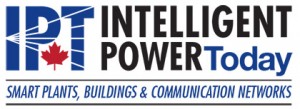Wireless Monitoring and IoT
The realm of electrical protection is continuously evolving, embracing advancements in technology to enhance system performance and reliability. One exciting development is the integration of wireless monitoring and Internet of Things (IoT) technologies into overcurrent and short circuit protection systems. This article explores how wireless monitoring and IoT contribute to improved protection strategies, highlighting their benefits, technical considerations, and potential future applications.
Visit Our Electrical Protection Study Course
Evolution of Overcurrent Protection
Overcurrent protection has traditionally relied on physical hardware like circuit breakers and fuses to prevent electrical damage. With the advent of wireless monitoring and IoT, the approach to managing overcurrent and short circuit conditions has evolved.
Integration of Wireless and IoT Technologies
Wireless monitoring and IoT technologies enable real-time data collection and analysis, remote control, and predictive maintenance, which are crucial for modern overcurrent protection strategies.
Benefits of Wireless Monitoring and IoT in Protection Systems
The integration of these technologies offers several advantages, significantly impacting the efficiency and reliability of protection systems.
Enhanced Real-Time Monitoring
Wireless monitoring allows for continuous observation of electrical systems, providing instant data on current flow, voltage levels, and system performance, leading to quicker responses to overcurrent conditions.
Predictive Maintenance and Fault Prediction
IoT devices can predict potential system failures by analyzing historical and real-time data, facilitating proactive maintenance and reducing downtime.
Remote Control and Configuration
Operators can remotely control and configure protection settings, adapting to changing system conditions without the need for physical intervention, enhancing system flexibility and operator safety.
Challenges and Technical Considerations
While wireless monitoring and IoT offer substantial benefits, their integration into overcurrent protection systems presents several challenges.
Cybersecurity Risks
The increased connectivity inherent in wireless and IoT systems introduces cybersecurity risks. Ensuring robust security measures to protect against unauthorized access and cyber attacks is crucial.
System Compatibility and Integration
Integrating new technologies with existing overcurrent protection infrastructure requires careful planning to ensure compatibility and seamless operation.
Reliability and Interference
Wireless systems must be reliable and free from interference to ensure accurate monitoring and control, necessitating high-quality hardware and robust network configurations.
The Future of Overcurrent Protection
Wireless monitoring and IoT technologies are set to play an increasingly significant role in the future of overcurrent protection, driving trends and shaping new strategies.
Advanced Data Analytics and Machine Learning
Leveraging advanced data analytics and machine learning algorithms, future systems will offer even more sophisticated predictive capabilities, optimizing overcurrent protection strategies based on extensive data sets and predictive models.
Integration with Smart Grid Technologies
As electrical grids become smarter and more interconnected, the integration of wireless monitoring and IoT in overcurrent protection will be crucial for the holistic management of grid reliability and efficiency.
The integration of wireless monitoring and IoT technologies signifies a significant advancement in overcurrent and short circuit protection. By enabling real-time data collection, enhanced fault detection and localization, and improved system coordination, these technologies contribute to a more proactive and efficient approach to protecting electrical systems. As the technology matures and security concerns are addressed, we can expect wider adoption of wireless monitoring and IoT solutions, leading to a more reliable and resilient electrical grid.
